What comes to mind when you think of a classic European city? Well, I’m pretty sure that the image you see won’t be far off from Salzburg.
Salzburg, nicknamed, “The Stage of the World”, thanks to its rich cultural heritage is famous for being the birthplace of Mozart as well as the setting for “The Sound of Music.”
Thankfully, if you’re high speed like me, this city is small enough that you can hit most of the major sites in a day. I wouldn’t have known this had I not met an American couple while on a train headed to Hallstatt, Austria from Switzerland.
I was heading into Austria with a final destination of Vienna, while they were headed down into Italy. At one point they mentioned Salzburg since it was on my train route. I told them that I hadn’t planned on stopping there and it took some serious convincing on their part to change my mind.
I can remember that exact conversation quite clearly.
“Oh, you should stop in Salzburg. You can do the city in a day.”
“Okay, sure. Why not.”
And that was that. It took me all of two seconds to change my itinerary and start researching Salzburg.
Table of Contents
Austria Travel Restrictions 2022
Something, something, something, COVID.
Austria has had some strict travel restrictions in place but things there have been slowly relaxing and it is now open to all travelers, as long as they meet certain requirements.
As of February 16, 2022, everyone entering Austria needs to show:
- Proof of full vaccination (2 doses) OR proof of past infection (the medical document needs to show the date of recovery – (for guests from the UK: an NHS email/text of a positive test is not sufficient)
- AND a negative PCR test (valid for 72 hours) OR proof of a booster jab (booster is valid from the first day)
- Things get a bit complex with what they consider fully vaccinated so see HERE for further details about entry.
So, you’ve got one day. What are the best things to do in Salzburg?
Mirabell Palace and Mirabell Gardens
Located within the Historic Centre of the City of Salzburg, Mirabell Palace, or Schloss Mirabell, and its absolutely beautiful gardens are one of Salzburg’s most popular tourist attractions.
You can freely walk through these geometric gardens and marvel at the many mythological themed statues that are spread throughout.
Peaceful and relaxing, you’ll probably find yourself drifting through them. Be careful not to miss anything as these gardens are both sprawling and divided into sections.
There is the Pegasus Fountain, the Grand Fountain, the Hedge Theater and the Dwarf Garden (both only open during the summer), the Rose Garden, and the Orangery. While you’re there, you may recognize the Pegasus Fountain as the location where the Trapp family sang the song “Do-Re-Mi” in the famous musical, “The Sound of Music.”
I didn’t get to go inside Mirabell Palace as it was closed, but be sure that you do if given the chance. Inside you’ll find Marble Hall which is considered to be one of the most beautiful wedding halls in the entire world.
Mirabell Palace is open daily from 8 AM – 6 PM.
Mirabell Gardens are open daily from 6 AM to dusk. The Dwarf Garden and Hedge Theatre are both closed during the winter months.
Admission to both Mirabell Palace and Gardens is free.
Don’t mess this up like I did
As you see above, the gardens open at 6AM and I arrived in Salzburg at 6AM. From the train station I put Fortress Hohensalzburg into my GPS and started walking.
This took me right past Schloss Mirabell early in the morning when it was near empty. Unfortunately, since that wasn’t my destination and I had no idea what it looked like from the street, I missed it at this opportune time.
Completely oblivious, I unwittingly followed a small group of tourists into the area, saw several great smaller fountains, took some good pictures, had a laugh at one particular fountain’s positioning from behind, and moved on to the fortress.
Little did I know that these gardens were right through an open door that I only glanced at. Later, while intentionally heading to the gardens I realized my mistake.
My words uttered in reaction were almost as colorful as the gardens themselves. So now instead of having empty gardens all to myself, I had to compete with hundreds of tourists and locals. Of all the places to go in Salzburg, this is the one you should see early in the morning.
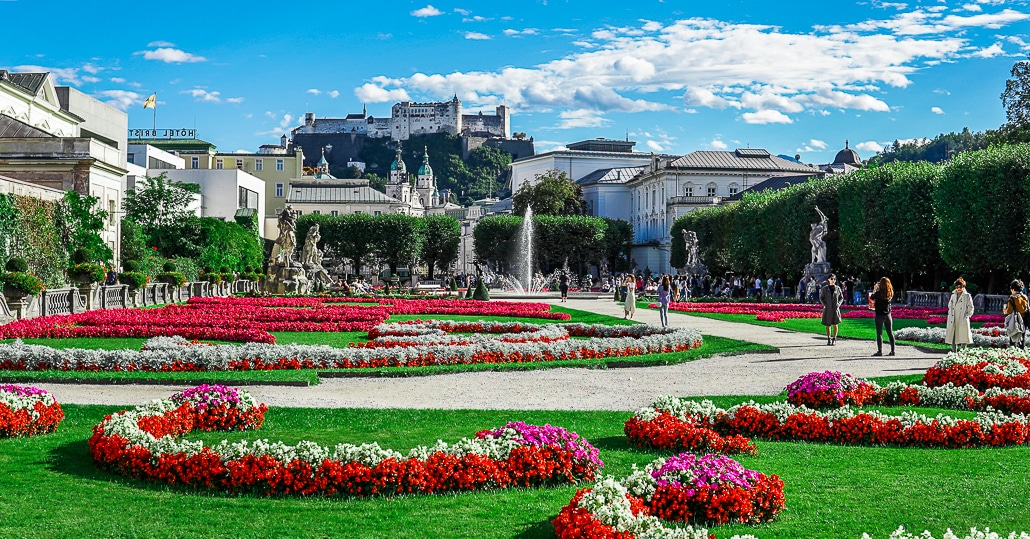
Mirabell Gardens with Fortress Hohensalzburg in the background.
Mozart’s Residence
Wolfgang Amadeus Mozart. Perhaps you’ve heard of him? He was one of the most prolific and influential composers of the classical era.
While you’re in Salzburg, you’ll see Mozart everywhere you turn. He is unquestionably Salzburg’s most famous son and if you get the chance, you can visit where he lived as well as the apartment where he was born and spent his earliest years.
Mozart-Wohnhaus is where the Mozart family lived from 1773 – 1787. With eight rooms, this first floor apartment was, even by today’s standards, quite large.
“The Dance Master’s House”, as it was known, had once belonged to… you guessed it, a dance master. This worked out well as it had a very large room that was once used for dance lessons. The Mozart family used it as practice space, for entertaining, and for holding small concerts.
Two thirds of the building had been destroyed in a World War II air raid but it has since been rebuilt as it was in the original plans. The reconstructed former residence now serves as another Mozart museum where you can see many original documents, portraits, and artifacts such as Mozart’s fortepiano.
Mozart’s Residence is open daily from 9 AM – 5:30 PM.
Tickets for Adults are € 12.00 or you can get a combined ticket for his residence and birthplace for € 18.50
Children will cost € 3.50 and Youths € 4.00
Imbergstiege
Known locally as the “Dark Staircase,” Imbergstiege is a very long staircase that winds its way from the park at Kapuzinerkloster Monastery down to street level in the Old Town. It offers plenty of perfect photo opportunities.
This is not the easiest staircase to find. You’d think that someplace with what felt like 2,000 stairs would stand out, but I had my GPS in hand as I wandered in circles trying to find the start.
The only advice I can give you on finding the first step, beyond using your GPS, is that it will look like a short staircase between a couple of buildings. By this I mean you won’t be able to stand at the bottom and look clear to the top.
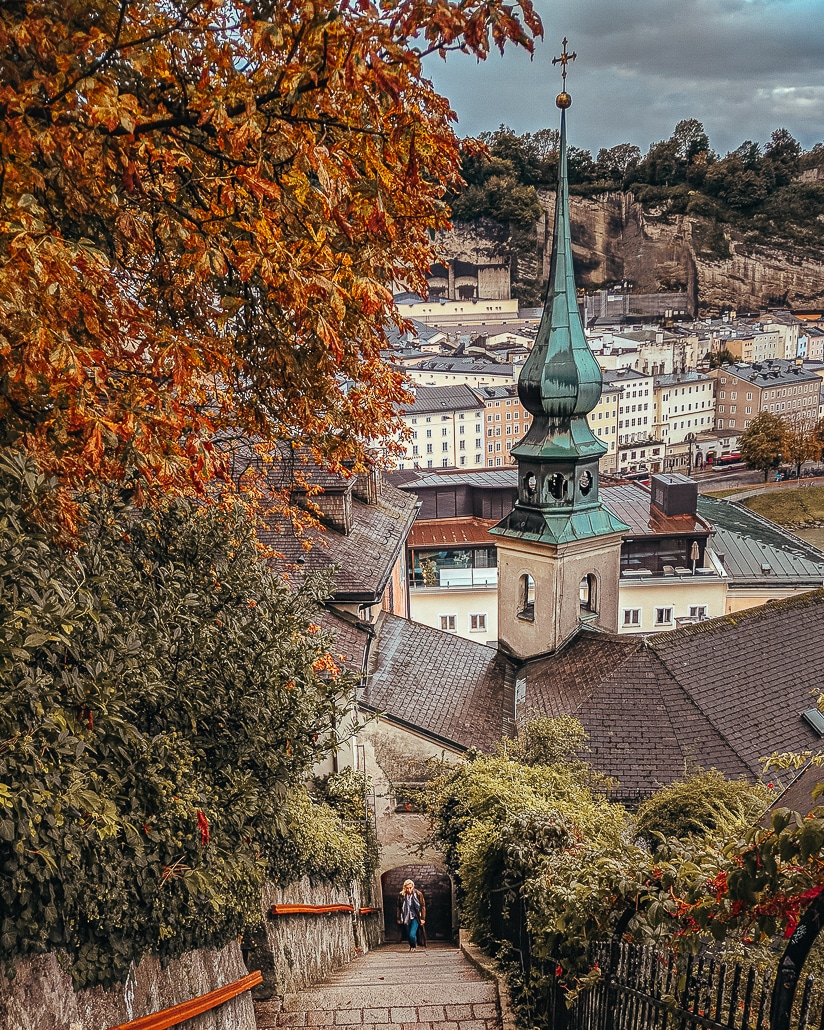
Imbergstiege, The Dark Staircase
Mozart’s Birthplace
No. 9 Getreidegasse, which is the physical address of the Mozart family’s third floor apartment was converted into a museum in 1880. Divided into three sections by floor, this museum gives you a glimpse into Mozart’s early life.
- On the first floor you’ll find a replica of what an apartment would have looked like in Mozart’s day complete with period furniture, original documents, and paintings illustrating his life in the city.
- The second floor is dedicated to his love of the opera and includes his personal clavichord which he used to compose The Magic Flute.
- The third floor, where the family actually lived from 1747 to 1773 (Mozart was born here on January 27, 1756) contains some of his childhood instruments such as his violin and harpsichord, several portraits, family letters, and early editions of his music. The fact that all of these things survived until now is absolutely incredible.
There is a guided tour that’s offered by prior arrangement. I didn’t take it, but it lasts about an hour.
Mozart’s Birthplace is open daily from 9 AM – 5:30 PM.
Tickets for adults are € 12 or you can get a combined ticket for his birthplace and residence for €18.50
Children will cost € 3.50 and youths € 4
Old Town
My favorite part of any European city, the old town. Now I assume you’ve all heard of UNESCO and the World Heritage sites. Well, Salzburg’s old town is one of the largest. Yes, the entire old town.
Technically the World Heritage site is Altstadt Salzburg, also known as the Historic Centre of the City of Salzburg and the Old Town sits inside of it but that’s irrelevant.
This old town is great and huge. I’m not sure which I like more. Salzburg’s Old Town or Barcelona’s Gothic Quarter. Salzburg’s is definitely larger and more authentic. I suppose you’ll have to decide for yourself!
The medieval and baroque architecture is everywhere you turn, including plenty of narrow, pedestrian only streets.
You’ll want to walk them all because you never know what little hidden gem stores you’re going to find as you explore. Don’t get too caught up in its beauty though. Be sure to take some time to sit and dine in one of the numerous traditional Austrian restaurants. The schnitzel is outstanding! Look at me, trying local foods.
Now if you’re very lucky, you may find yourself here on the day of an event. The previous day I was stuck in the Munich, Germany train station during a little get-together known as Oktoberfest. Well, not to be left out, it just so happens that Salzburg throws their own “smaller” Oktoberfest, lederhosen and all.
I spent so much time on my feet storming around while trying to see everything and drink every giant beer that by the end of the day, I was ready to drop.
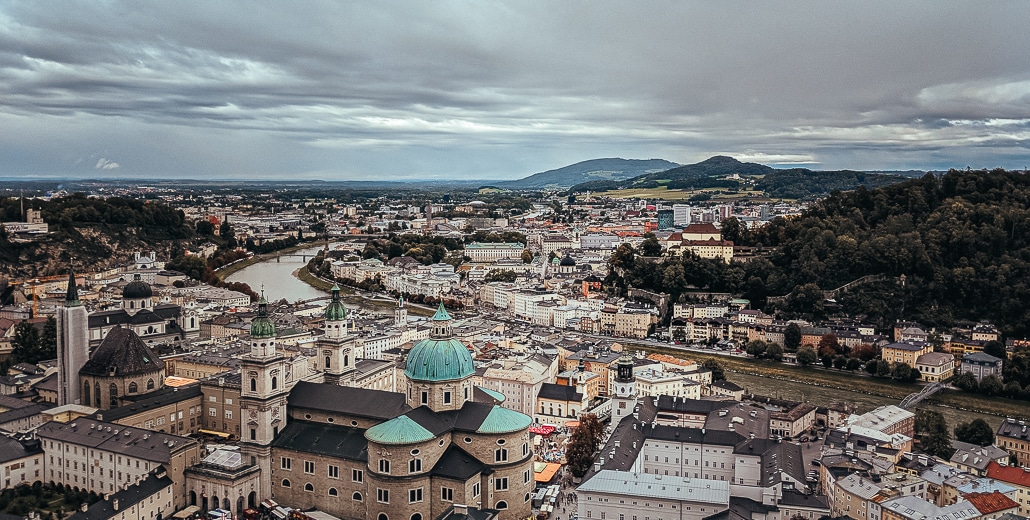
Salzburg Old Town, as seen from above
Getreidegasse
Old Town is huge and though many of these sites are located within, if you’re hoping to do anything else, exploring it all in a day is unrealistic. Thankfully there are a few stand out streets for you to focus on. One such street is Getreidegasse, a large pedestrian street which runs parallel to the Salzach river.
Renowned for its shopping, it’s here that you’ll find Mozart’s birthplace at No. 9.
Salzburg Cathedral
Dom zu Salzburg, located within the Old Town section of Salzburg, is a seventeenth-century Baroque cathedral with a very long history.
Unfortunately, it suffered a completely destructive fire, which was used as an excuse for a disrespectful razing by a soon to be arrested Archbishop, and bomb during World War II. This cathedral, obviously no longer the original, has seen its share of rough days.
At first glance it may not appear as much to you from the outside, especially when compared to other classic cathedrals of Western Europe.
While the square out front is impressive, there’s no rose window, no towers reaching for the heavens, and no elaborate tile work. But as you get closer, you’ll see that the facade is quite well decorated. Then, once you get inside, it’s spectacular. The art, the domes, the balconies, the pipe organs. If you’re in Salzburg, this is a must see.
The cathedral hours vary by month:
- January, February: Monday – Saturday 8 AM – 5 PM, Sunday & public holiday 1 PM – 5 PM
- March-October: Monday – Saturday 8 AM – 6 PM, Sunday & public holiday 1 PM – 6 PM
- November: Monday – Saturday 8 AM -5 PM, Sunday & public holiday 1 PM – 5 PM
- December: Monday – Saturday 8 AM -6 PM, Sunday & public holiday 1 PM – 6 PM
There is no visiting during Mass.
Got all of that?
Admission is € 5 for adults.
Guided tours costs € 5 for adults.
Hohensalzburg Fortress
My favorite part of Salzburg! This is one heck of a fortress. Hohensalzburg Fortress lives up to the classic image of a military fortress that was packed full of soldiers and craftsman.
While they probably had to bring up tons of food to feed everyone, this fortress felt like its own village, similar to the self sustaining castles you see on TV and movies.
Its scale is so large that it can be quite easy to get disoriented. It took me several minutes of walking to find my way to the exit.
Perched upon the small mountain named Festungsberg, Hohensalzburg Fortress dominates the Salzburg skyline. You’ll be able to see it from pretty much anywhere. It is one of the largest and best preserved castles in all of Europe. Its construction and renovation began in 1077 and continued until it was abandoned in 1861.
Reaching the fortress can take a while. It is, after all, located on top of a small mountain. Should you wish to walk to the top, be prepared for lots of stairs and a winding paved road to the top followed by an almost too steep dirt and gravel road up through the main gate.
Don’t feel like making that long walk? Well, you’re in luck as there is a modern funicular (cable car) up the mountain side which will get you to the top in less than a minute. Pricing for the funicular can be found here as there are a lot of different pricing options.
I walked.
Hours for the Fortress are:
- January – April: 9:30 AM – 5 PM
- May – September: 9 AM – 8 PM
- October – December: 9:30 AM – 5 PM
Admission to the fortress varies depending on what you want to see or do inside and when you want to arrive. All pricing options (and there are a lot!) can be found HERE.
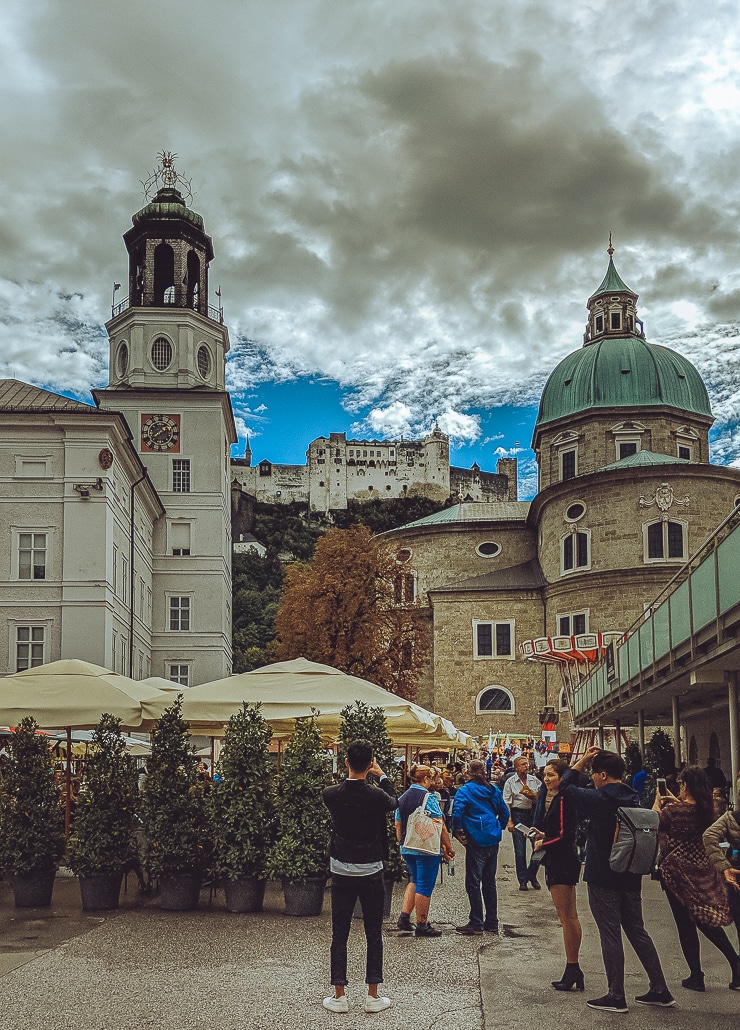
Fortress Hohensalzburg, Salzburg as seen from below.
St. Peter’s Monastery and Cemetery
The Petersfriedhof, or St. Peter’s Monastery and Cemetery, when combined with the burial site at Nonnberg Abbey is the oldest cemetery in Salzburg. With its beautiful Christian architecture, this monastery located at the base of the Festungsberg mountain below Hohensalzburg Castle is one of the most popular sights in the city. Be sure to see the catacombs carved into the Festungsberg for the full experience. Reservations are recommended.
Unfortunately, I missed the Abbey. I had planned on stopping by but instead found myself caught up in the Oktoberfest celebration with a large beer stein in hand. I regret nothing!
St. Peter Stiftskulinarium
The oldest of anything is usually worth seeing and Salzburg happens to play home to one such place. Located within the walls of St. Peter’s Abbey (see above), St. Peter Stiftskulinarium is the oldest restaurant in Europe, possibly the world.
You know how many restaurants like putting pictures of famous patrons on their wall? Well, here, had cameras existed back then, you would have found pictures of Wolfgang Amadeus Mozart, Christopher Columbus, and Johann Georg Faust.
I doubt they made reservations but you’ll want to.
Love Lock Bridge
Oh, sooo romantic! Yea yea…
The tradition of love locks goes all the way back to the bridge Ljubavi, in the Serbian town of Vrnjačka Banja, around World War I.
Supposedly a man and woman fell in love and met at the bridge every night. He eventually went off to fight in the war and fell in love with someone else while away. This broke the heart of the woman. In some versions of the story, she died of heartbreak.
After that, superstitious local women began going to the same bridge, etching the names of themselves and their lovers on padlocks, and locking them to the bridge. By doing this they hoped to lock their love in place so the same thing wouldn’t happen to them.
It’s a sound scientific theory, when you think about it.
I’m not fond of this, now global tradition, as the weight from all the locks becomes dangerous. They’re heavy!
Part of the Pont des Arts bridge in Paris actually collapsed under the weight from all the locks. One lock itself doesn’t weigh very much, but together? When Paris finally removed the locks still on the bridge, they weighed in at over 45 tons!
Should you be interested, you can buy an overpriced red lock in the nearby market for around € 10 – 15.

Love Lock Bridge where you can lock your love in place forever. Or until the city cuts it off once a year. Whichever happens first.
Salzburg Museum
Housed in the Neuen Residenz, the Salzburg Museum is the museum of artistic and cultural history for the city and region. This museum plays host to many artifacts of the cultural and artistic history of the city of Salzburg. The most popular features being the multiple 360-degree panoramas and the other being the building itself.
The Sound of Music Tour
If the Mozarts are Salzburg’s first family, then the von Trapp family are a close second. While this is going to take you beyond the city of Salzburg, perhaps you would like to follow in their footsteps.
The popular Sound of Music Tour will take you to the original shooting sites featured in the movie such as Mirabell Gardens, Schloss Leopoldskron, Hellbrunn Palace, Nonnberg Abbey, St. Gilgen, and Mondsee Basilica.
Growing up, I was never fond of the movie so I passed on this, but that doesn’t mean you should. I’ve heard plenty of positive things about it!

The Extras
The Salzburg Card
City Cards are a common offering in most major European cities, so of course Salzburg has one of its own. The Salzburg Card is a great tool to help you see the city cheaper and more efficiently.
It gets you free one-time admission to all thirty-two city tourist attractions as well as free use of the public transportation system and numerous additional discounts.
The card is available in 24, 48, and 72-hour increments at various prices. I personally didn’t get a card but I know that I spent over the € 27 a peak season 24-hour card would have cost me.
Plus I wouldn’t have had to do as much walking and could have taken the funicular to the top of the mountain to see the fortress. Sure, you can manage without one for 24 hours like I did but if you’re going to be in the city for two or three days, this is a wise investment.
Cards can be ordered online HERE, purchased from any hotel reception, or from any tourist information office in or around the city.
Just note that the Sound of Music Tour is not included.
Where to Stay
When you’re deciding where to stay in Salzburg, you have one primary decision to make. Old Town or New Town. The city lies on two sides of the river Salzach with the Old Town falling on the south side of the river and the New Town on the north side.
The South side (Old Town) is where you’ll find the majority of the beautiful sites that I have outlined above. New Town does have some older buildings but it’s nowhere on the same level.
Even though I didn’t spend the night in Salzburg, I prefer staying right in the thick of things. I would have stayed in Old Town.
That’s not to say that there’s no reason to stay in New Town. It’s just a quick hop across the river to get from New to Old.
New Town is more modern and has plenty of restaurants for you to choose from, though I would still recommend the smaller, more traditional places to eat in Old Town.
There is also generally more space and less congestion. This would come in handy if you have your own vehicle and are looking for a place to park.
Budget options are a bit limited in Salzburg as Hostelworld only lists around seven properties. Booking.com has far more options if you’re not feeling up to a hostel.
Not looking to spend the night? If you should find yourself to be in a rush and would like to try forcing the issue, you can always convince your drunken self that you’ll make a connecting train when it’s plainly obvious that you won’t. Then you’ll be nice and toasty when you’re forced to sleep in a 900 degree train station in the middle of nowhere after getting stranded for the night.
Though, I do suppose this is technically the ultimate budget option.
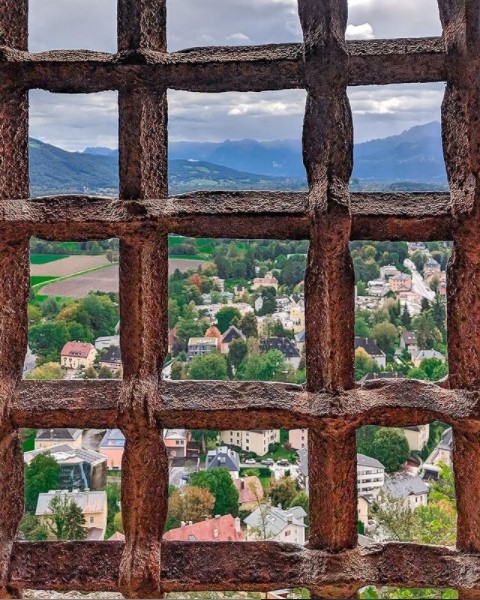
The View from Fortress Hohensalzburg
Planning your day
Just some food for thought, remember when I mentioned messing up my route through the city? Well, I didn’t realize just how much until I detailed everywhere I went and saw it all laid out on a single map. When you put (most of) these sites into Google Maps they line up quite well. You can visit one after another in what is pretty much a straight line from Salzburg Central Train Station to Hohensalzburg Fortress. /facepalm
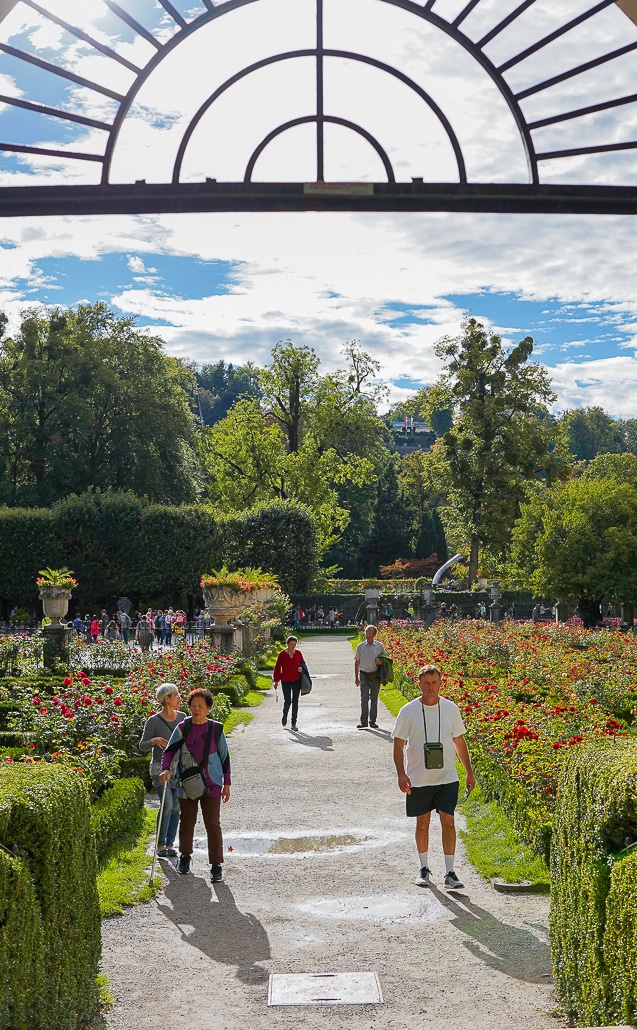
Through the gate doorway that I never checked.
I hope you enjoy your time in Salzburg. What did you decide to see? Did you get stuck in a random train station too? Let me know in the comments below, I’d love to know!
DID YOU ENJOY THIS ARTICLE? PIN IT!


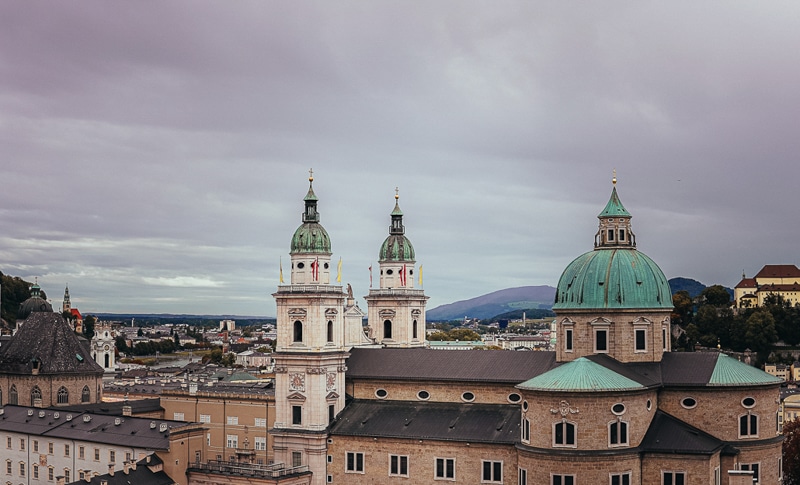
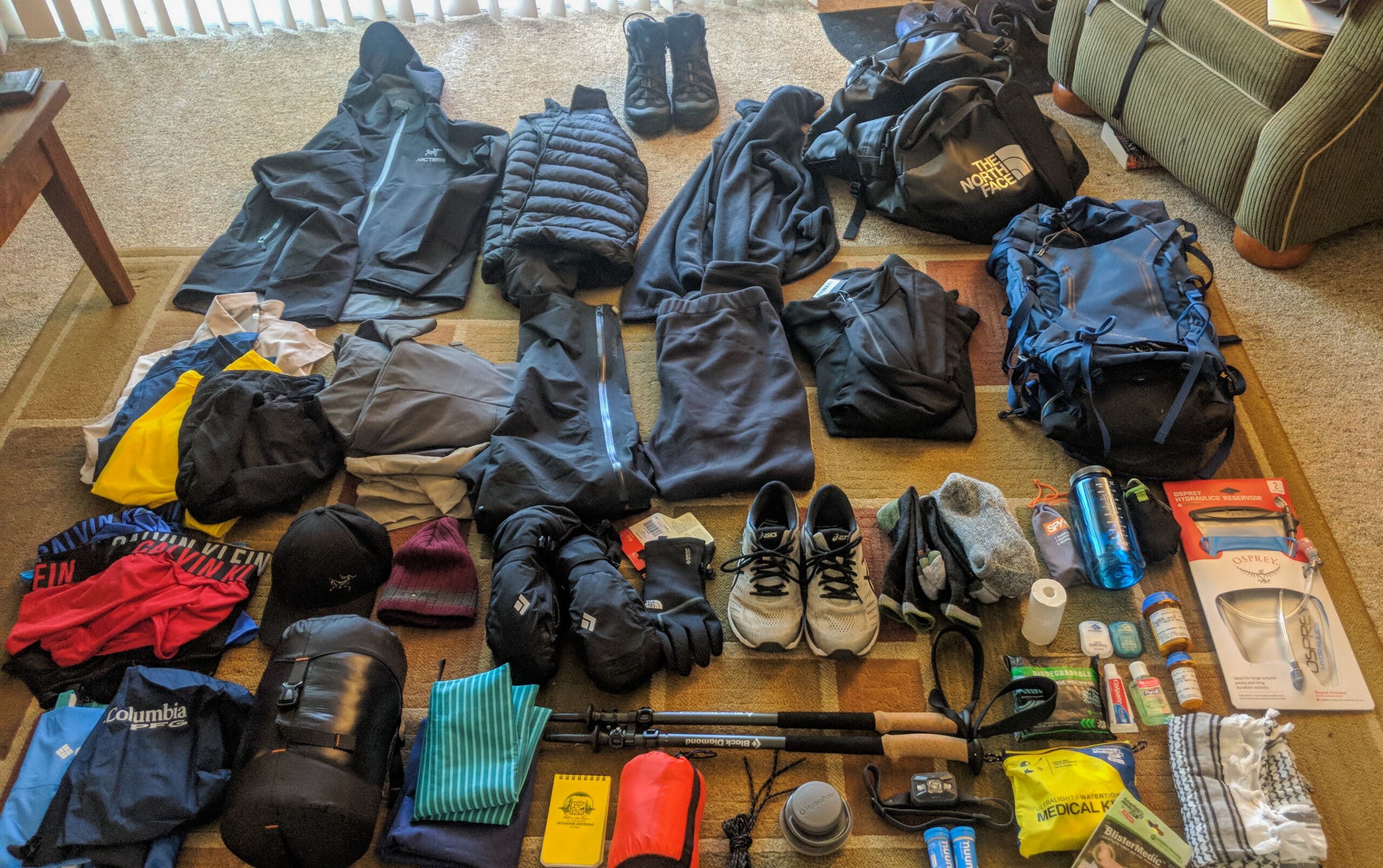
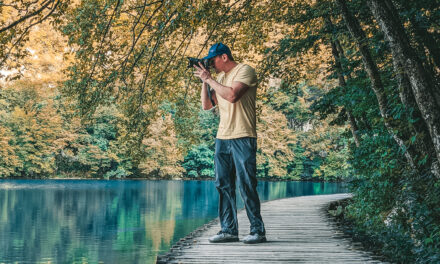
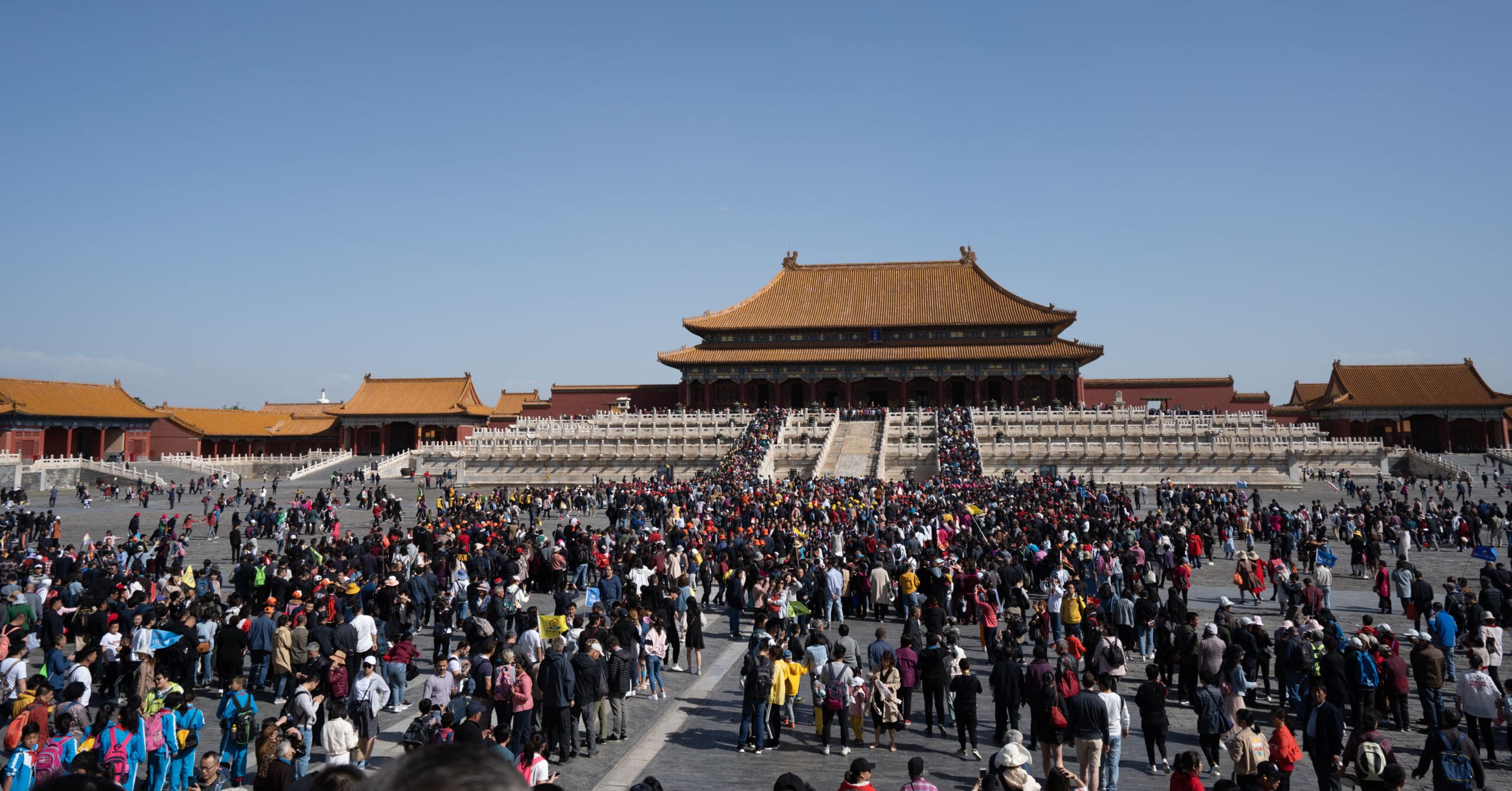
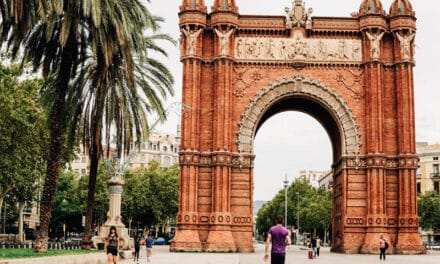
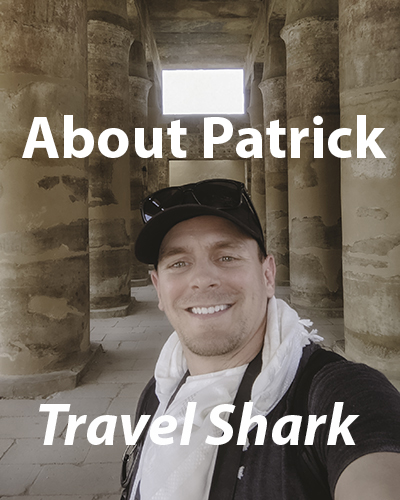
I recently returned from a trip to Salzburg and it was absolutely beautiful! The city’s charming cobblestone streets, stunning mountain views, and charming buildings made it a dream destination. Highlights included visiting the Salzburg Fortress and Hohensalzburg Castle, as well as trying traditional Austrian dishes like schnitzel and strudel. I can’t wait to go back and explore more of Austria in the future.
That’s awesome! I’m glad you enjoyed Salzburg 🙂 It’s a beautiful city. I imagine it must be even better during the holiday season!